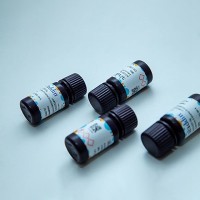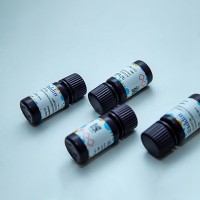Knowledge of the molecular and cellular events characterizing osteoblast development is growing as new markers, including important classes of regulatory molecules such as transcription factors (e.g., Cbfa-1 [1 ]), are elucidated. Nevertheless, a paucity of definitive and specific markers, especially for the more primitive progenitors and the hemopoietic lineages (2 ). One useful model, however, has been culture of mixed populations of freshly isolated cells derived from a variety of bones (e.g., 21-d fetal rat calvaria [RC]) or bone marrow stroma under conditions that favor osteoblast development (2 ). For example, when such heterogeneous primary cultures are grown long-term (approx 3 wk) in medium supplemented with ascorbic acid and α-glycerophosphate, a low frequency (about 0.00001–1% of unfractionated freshly isolated populations) of osteoprogenitor cells present divide and differentiate to form 3-dimensional mineralized bone nodules (3 ,4 ). These infrequent cells comprise the colony forming units or colony forming cells-osteoprogenitor (CFU-Os or CFC-Os, respectively) in populations from the whole tissue and appear analogous to the nonstem cell CFU/CFCs in lineages such as the hemopoietic. Notably, the frequency of such cells can be determined by limiting dilution, and they appear to have limited capacity for self-renewal (3 ,4 ). On the other hand, morphological, immunohistochemical, and molecular analyses have confirmed that differentiation of CFU-Os and formation of bone nodules reproducibly recapitulates a proliferation-differentiation sequence from an early precursor cell to a mature osteoblast (2 ).






